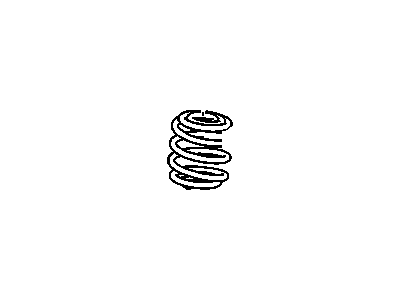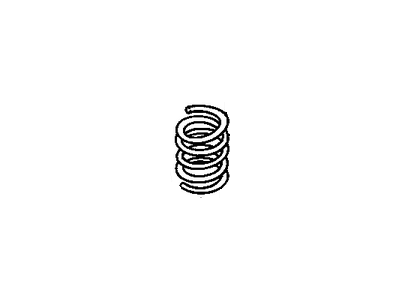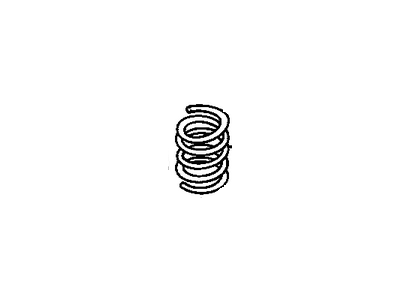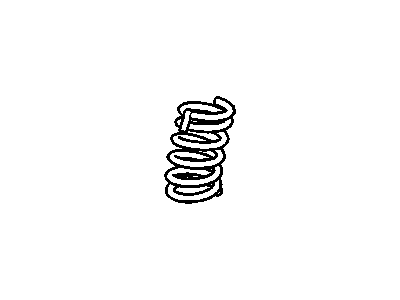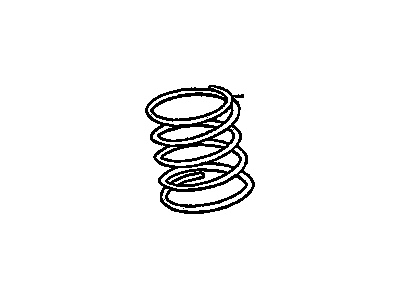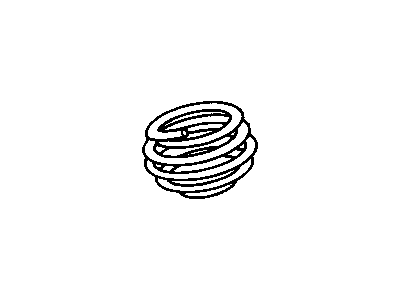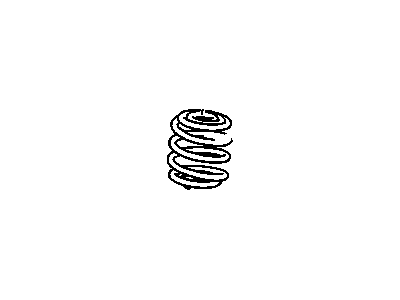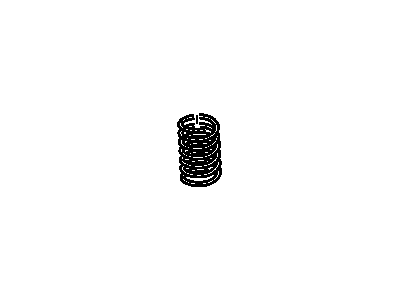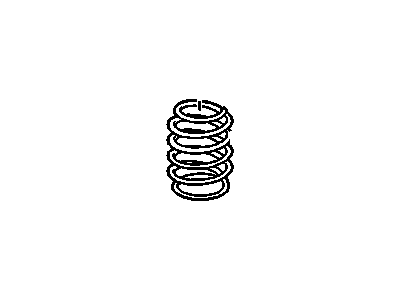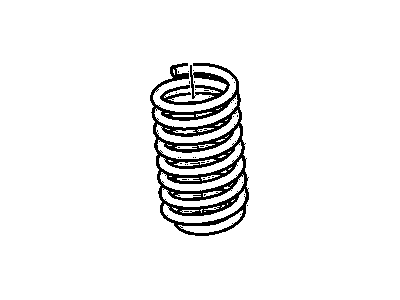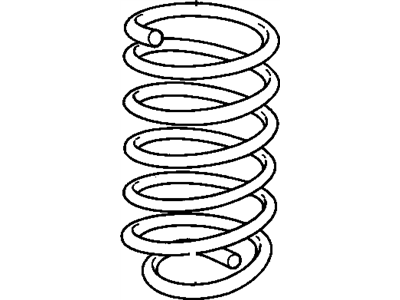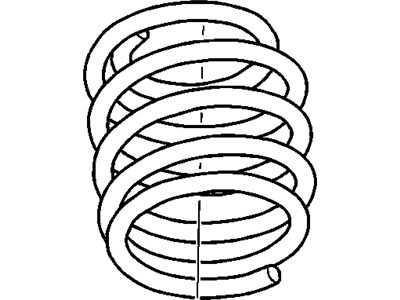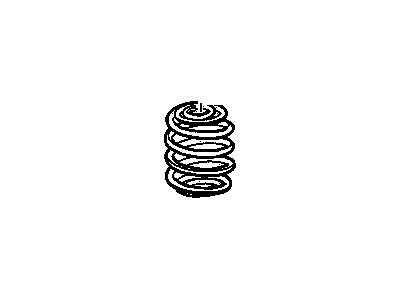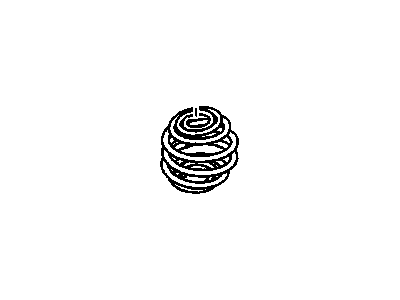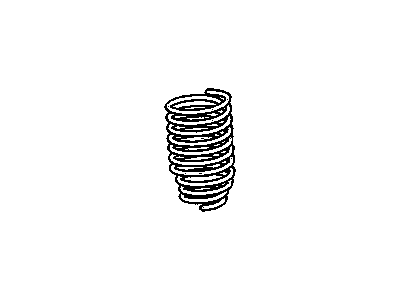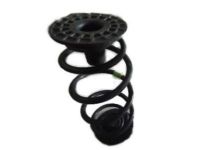
My Garage
My Account
Cart
Genuine Pontiac Coil Springs
Strut Spring- Select Vehicle by Model
- Select Vehicle by VIN
Select Vehicle by Model
orMake
Model
Year
Select Vehicle by VIN
For the most accurate results, select vehicle by your VIN (Vehicle Identification Number).
187 Coil Springs found
Pontiac Rear Spring
Part Number: 22731055$42.39 MSRP: $76.04You Save: $33.65 (45%)Ships in 1-2 Business DaysProduct Specifications- Other Name: Spring, Rear; Coil Spring, Spring
- Position: Rear
Pontiac Rear Spring
Part Number: 22731053$88.25 MSRP: $158.29You Save: $70.04 (45%)Ships in 1-3 Business DaysProduct Specifications- Other Name: Spring, Rear; Coil Spring, Spring
- Position: Rear
- Product Specifications
- Other Name: Spring, Front; Spring
- Position: Front
- Product Specifications
- Other Name: Spring, Front; Control Arm Spring, Spring
- Position: Front
Pontiac Rear Spring
Part Number: 20884744$64.02 MSRP: $129.10You Save: $65.08 (51%)Ships in 1-2 Business DaysProduct Specifications- Other Name: Spring, Rear; Coil Spring, Spring
- Position: Rear
- Replaces: 15940292, 15940290, 25971723
- Product Specifications
- Other Name: Spring, Front Chassis; Coil Spring
- Position: Front
- Product Specifications
- Other Name: Spring,Front; Coil Spring, Spring
- Position: Front
Pontiac Front Springs
Part Number: 22078113$65.60 MSRP: $90.19You Save: $24.59 (28%)Ships in 1-2 Business DaysProduct Specifications- Other Name: Spring,Front; Coil Spring, Spring
- Position: Front
Pontiac Rear Spring
Part Number: 15243844$47.92 MSRP: $90.41You Save: $42.49 (47%)Ships in 1-2 Business DaysProduct Specifications- Other Name: Spring, Rear; Coil Spring, Spring
- Position: Rear
Pontiac Rear Spring (Rh Proc)
Part Number: 15266733$16.12 MSRP: $89.74You Save: $73.62 (83%)Ships in 1-2 Business DaysProduct Specifications- Other Name: Spring, Rear (Rh Proc)
- Position: Rear Passenger Side
- Replaces: 15266734
Pontiac Rear Spring
Part Number: 22132418$37.08 MSRP: $147.53You Save: $110.45 (75%)Ships in 1-2 Business DaysProduct Specifications- Other Name: Spring, Rear
- Position: Rear
Pontiac Front Spring
Part Number: 25849163$127.31 MSRP: $147.92You Save: $20.61 (14%)Ships in 1-2 Business DaysProduct Specifications- Other Name: Spring, Front Chassis; Spring
- Position: Front
Pontiac Front Springs
Part Number: 22132938$5.02 MSRP: $9.00You Save: $3.98 (45%)Ships in 1-2 Business DaysProduct Specifications- Other Name: Spring, Front Chassis; Coil Spring, Spring
- Position: Front
- Replaces: 22132902
Pontiac Front Springs
Part Number: 22132945$101.48 MSRP: $182.02You Save: $80.54 (45%)Ships in 1-2 Business DaysProduct Specifications- Other Name: Spring,Front
- Position: Front
Pontiac Front Springs
Part Number: 20903314$50.30 MSRP: $98.18You Save: $47.88 (49%)Ships in 1-2 Business DaysProduct Specifications- Other Name: Spring,Front; Coil Spring
- Position: Front
Pontiac Rear Spring
Part Number: 22705489$48.13 MSRP: $94.64You Save: $46.51 (50%)Ships in 1-2 Business DaysProduct Specifications- Other Name: Spring, Rear; Coil Spring, Spring
- Position: Rear
- Product Specifications
- Other Name: Spring, Rear
- Position: Rear
- Product Specifications
- Other Name: Spring,Rear; Spring
- Position: Rear
- Product Specifications
- Other Name: Spring,Rear; Coil Spring, Spring
- Position: Rear
- Product Specifications
- Other Name: Spring,Front; Coil Spring, Spring
- Position: Front
- Replaces: 22078101, 22078115
| Page 1 of 10 |Next >
1-20 of 187 Results
Pontiac Coil Springs
If you're searching for OEM Pontiac Coil Springs, look no further. Our website boasts an extensive inventory of genuine Pontiac Coil Springs, all available at competitive prices online. Every part we offer comes with a manufacturer's warranty. In addition, we provide a straightforward return policy and rapid delivery services, making your shopping experience a breeze.
Pontiac Coil Springs Parts Questions & Experts Answers
- Q: How to replace a Coil Springs and Shock Absorber assembly on Pontiac G6?A:If the struts or coil springs show signs of wear such as leaking fluid, loss of damping capability, chipped, sagging or cracked coil springs, it is important to explore all options before starting any work. The strut coil spring components cannot be serviced and must be replaced if there is a problem. However, there may be strut assemblies available that come complete with springs on an exchange basis, which can save time and effort. Before disassembling the vehicle, it is recommended to check the cost and availability of parts. To disassemble the strut and spring assembly, the strut clevis bracket portion should be mounted in a vise. A spring compressor should be installed on the spring following the manufacturer's instructions to relieve pressure from the upper spring seat. The damper shaft nut should be unscrewed while holding the damper shaft from turning. The nut and upper mount should be removed and laid out in the order they were removed. The rubber portion of the upper mount should be checked for cracking and deterioration, and replaced if necessary. The upper spring seat should be removed from the damper shaft and the rubber portion should be inspected for cracking and hardness. The bearing in the spring seat should also be checked for smooth operation. The dust boot and rubber bump stop should be slid off the damper shaft and checked for cracking and deterioration, with replacement if needed. The compressed spring should be carefully lifted from the assembly and set aside. To reassemble, the damper rod should be extended and the rubber bump stop and dust boot should be installed. The compressed coil spring should be placed onto the lower seat of the damper, with the end of the spring against the raised stop. The upper insulator and spring seat should be installed, followed by the upper mount and mounting nut, which should be tightened to the proper torque specifications. The spring compressor tool can then be removed, and the strut spring assembly can be installed.
Related Pontiac Parts
Browse by Model
6000 Coil Springs Aztek Coil Springs Bonneville Coil Springs Firebird Coil Springs G3 Coil Springs G5 Coil Springs G6 Coil Springs G8 Coil Springs GTO Coil Springs Grand Am Coil Springs Grand Prix Coil Springs J2000 Coil Springs LeMans Coil Springs Montana Coil Springs Pursuit Coil Springs Solstice Coil Springs Sunbird Coil Springs Sunfire Coil Springs Sunrunner Coil Springs Torrent Coil Springs Trans Sport Coil Springs Vibe Coil Springs

